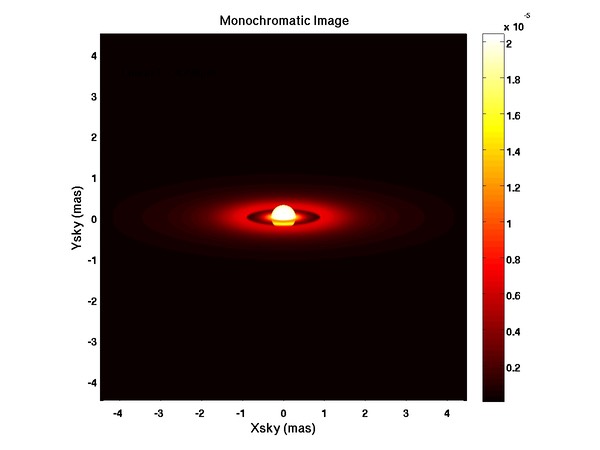
This is a theoretical image of a Be star seen at a wavelength of about 5 microns (in the infrared, or heat, portion of the electromagnetic spectrum) as computed by my beray code. The central star is assumed to be a massive B1V star (about 13 times more massive than the Sun and about 5 times hotter). Surrounding the star is a circumstellar disk of gas, and it is the presence of the disk that makes this B star a Be star. The disk is very thin and in the equatorial plane of the star. The model disk used in this calculation includes a "hole," or evacuated region, in the inner disk that can be clearly seen, The observer (you!) is looking at the system nearly, but not quite, edge-on. The colour bar to the right codes the intensity of the image: white for very bright (the central B star) and red for faint (the outer parts of the disk). In the visible region of the electromagnetic spectrum, the intensity of the star would be much, much larger than the disk, making the latter difficult to see. The image coordinates, Xsky and Ysky, are in milli-arcseconds as the system is assumed to be viewed from a distance of 100pc or 326 light-years, making the image extremely small on the sky. Note that the resolution of the Hubble Space Telescope is about 0.1 arc-seconds or 100 mill-arcseconds! However such small images on the sky can be resolved using a combination of 3 or more telescopes called an interferometer.